The Fondation Beyeler will devote the first exhibition of its anniversary year to Georgia O’Keeffe (1887– 1986), one of the most significant painters and an icon of modern American art. With 85 works from mainly American public and private collections, “Georgia O’Keeffe” offers a representative overview of this exceptional artist’s many-faceted and endlessly surprising work. The retrospective provides European viewers with a rare opportunity for such in-depth exploration of Georgia O’Keeffe’s work, which is hardly represented in collections outside the United States.
The exhibition at the Fondation Beyeler highlights O’Keeffe’s distinctive way of contemplating her environment and translating her perceptions into wholly unprecedented images of reality – at times almost abstract, at times close to their model in nature.
“One rarely takes the time to really see a flower. I have painted it big enough so that others would see what I see.” This quote from 1926 can be viewed as a guiding thread when considering O’Keeffe’s art and life. O’Keeffe developed a highly distinctive visual language, shifting between abstraction and figuration, which to this day has lost none of its topicality. Her singular gaze, combined with her delicate and respectful approach to nature, make Georgia O’Keeffe the most significant and interesting landscape and nature painter of the 20th century.
From 1918, Georgia O’Keeffe spent decisive years of her artistic development in New York City, at the heart of the then fashionable and highly influential small circle around Alfred Stieglitz, photographer, gallery owner and advocate of modern art. Next to providing an early venue for the display and discussion of the European avant-garde, his gallery also fostered new American art and photography. O’Keeffe owed her early recognition and subsequent career to the support provided by Stieglitz, who later became her husband, and to her connection over many decades to the New York art scene. Yet in terms of her artistic output, urban life left only very few discernible traces.
O’Keeffe grew up on her parents’ dairy farm in Wisconsin, in the American Midwest. The decisive steps in her artistic development took place in Charlottesville, Virginia, and later in Canyon, Texas, where she taught art from 1916 to 1918. Even after moving to New York, her life as an artist remained punctuated by regular stays in different places. During many years, she thus spent summers at the Stieglitz family’s holiday home on Lake George in the State of New York, which provided the inspiration for much of the work she produced during this time.
In 1929, O’Keeffe for the first time spent several weeks in New Mexico in the American Southwest, where she would henceforth return every year, always alone, and where she would settle for good following Stieglitz’ death.
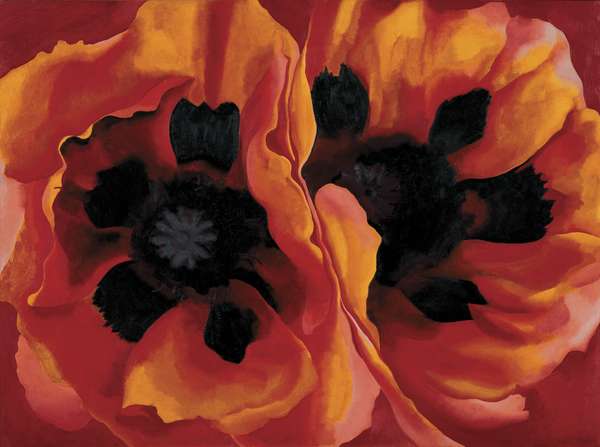
GEORGIA O’KEEFFE, ORIENTAL POPPIES, 1927
Oil on canvas, 76.7 x 102.1 cm
Collection of the Frederick R. Weisman Art Museum at the University of Minnesota, Minneapolis. Museum purchase.
© Georgia O’Keeffe Museum / 2021, ProLitteris, Zurich
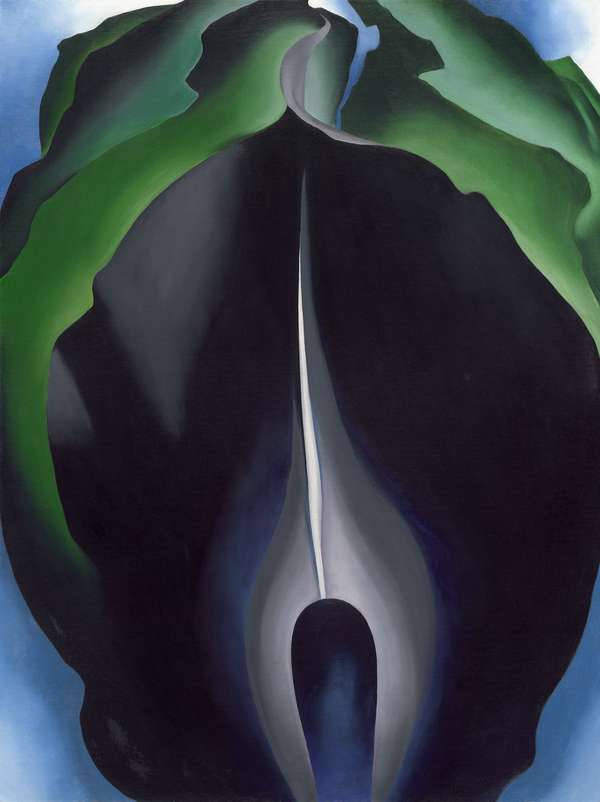
GEORGIA O’KEEFFE, JACK-IN-THE-PULPIT NO. IV, 1930
Oil on canvas, 101.6 x 76.2 cm
National Gallery of Art, Washington, Alfred Stieglitz Collection, Bequest of Georgia O'Keeffe, 1987
© Board of Trustees, National Gallery of Art, Washington
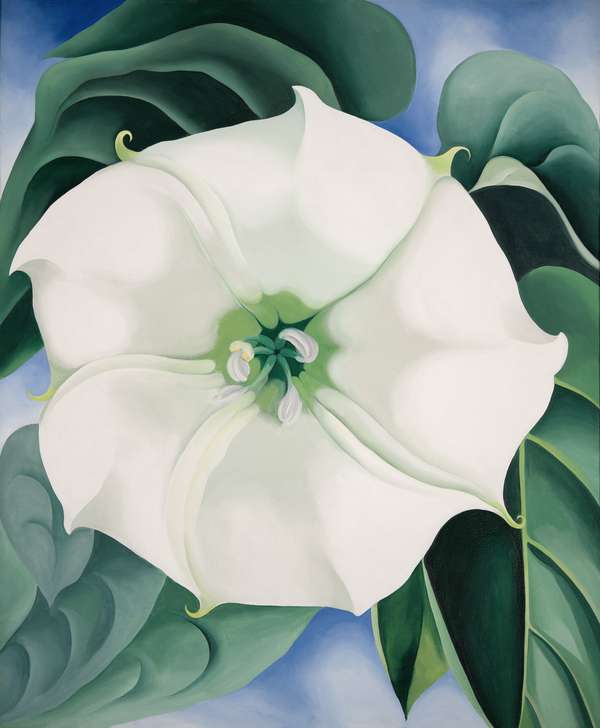
GEORGIA O’KEEFFE, JIMSON WEED / WHITE FLOWER NO.1, 1932
Oil on canvas, 121.9 x 101.6 cm
Crystal Bridges Museum of American Art, Bentonville, Arkansas
© Georgia O’Keeffe Museum / 2021, ProLitteris, Zurich
Photo: Edward C. Robison III.
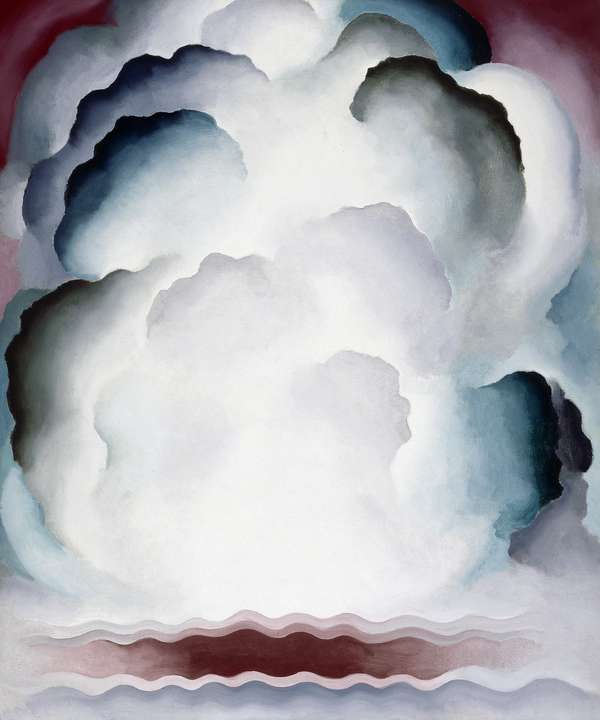
GEORGIA O’KEEFFE, ABSTRACTION – ALEXIUS, 1928
Oil on canvas, 91.4 x 76.2 cm
Regula and Beat Curti
© Georgia O’Keeffe Museum / 2021, ProLitteris, Zurich
Photo: Courtesy of the Georgia O'Keeffe Museum
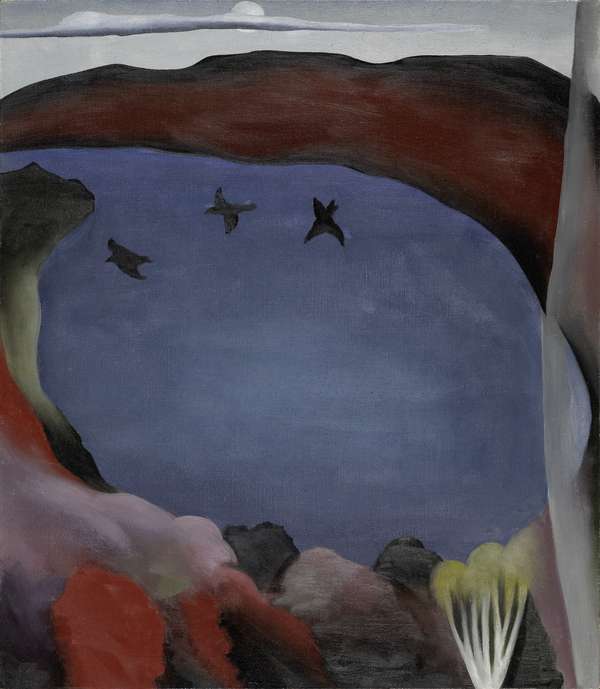
GEORGIA O’KEEFFE, LAKE GEORGE WITH CROWS, 1921
Oil on cavas, 72 x 63.2 cm
National Gallery of Canada, Ottawa. Gift of the Georgia O'Keeffe Foundation, Abiquiu, New Mexico, 1995
© Georgia O’Keeffe Museum / 2021, ProLitteris, Zurich
Photo: NGC
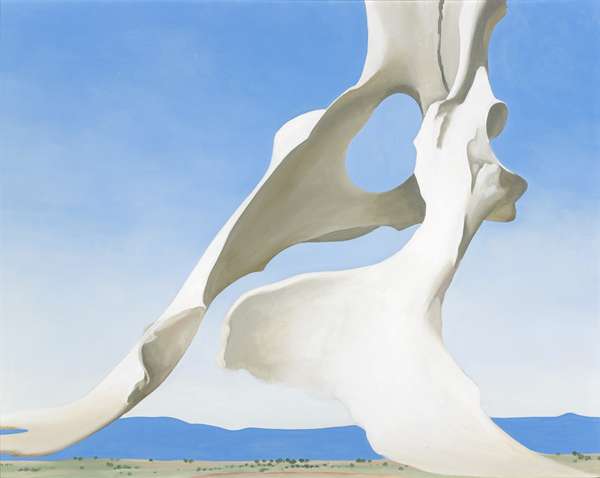
GEORGIA O’KEEFFE, PELVIS WITH THE DISTANCE, 1943
Oil on canvas, 60.6 x 75.6 cm
Indianapolis Museum of Art at Newfields, Gift of Anne Marmon Greenleaf in memory of Caroline Marmon Fesler,
© Georgia O’Keeffe Museum / 2021, ProLitteris, Zurich
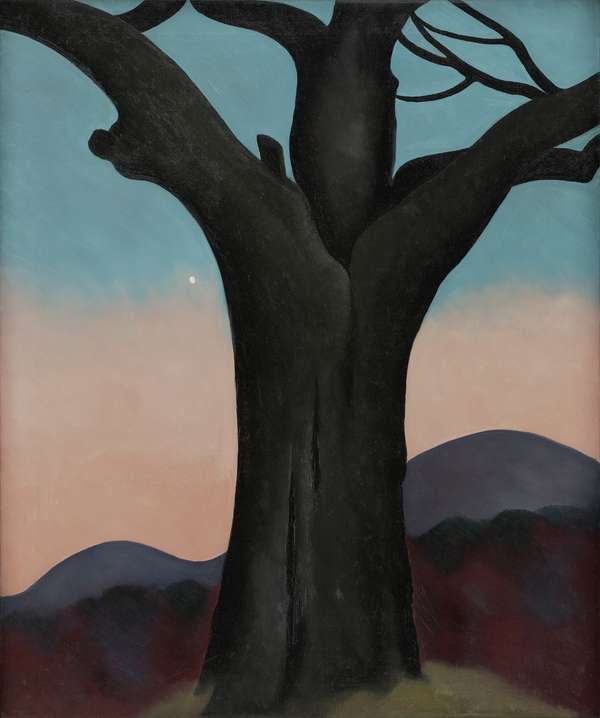
GEORGIA O’KEEFFEE, THE CHESTNUT TREE – GREY, 1924
Oil on canvas, 91.44 x 76.2 cm
Myron Kunin Collection of American Art, Minneapolis, MN
© Georgia O’Keeffe Museum / 2021, ProLitteris, Zurich
Photo: Minneapolis Institute of Art
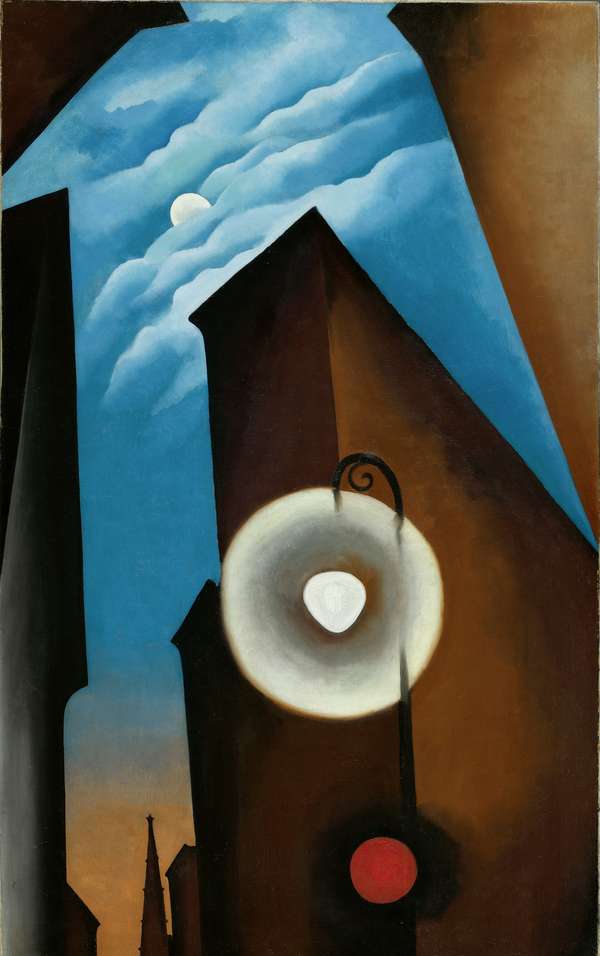
GEORGIA O’KEEFFE, NEW YORK STREET WITH MOON, 1925
Oil on canvas, 122 x 77 cm
Carmen Thyssen-Bornemisza Collection on loan to the Museo Nacional Thyssen-Bornemisza, Madrid
© Georgia O’Keeffe Museum / 2021, ProLitteris, Zurich
Photo: Provenance: Carmen Thyssen-Bornemisza Collection on loan at the Museo Nacional Thyssen-Bornemisza, Madrid
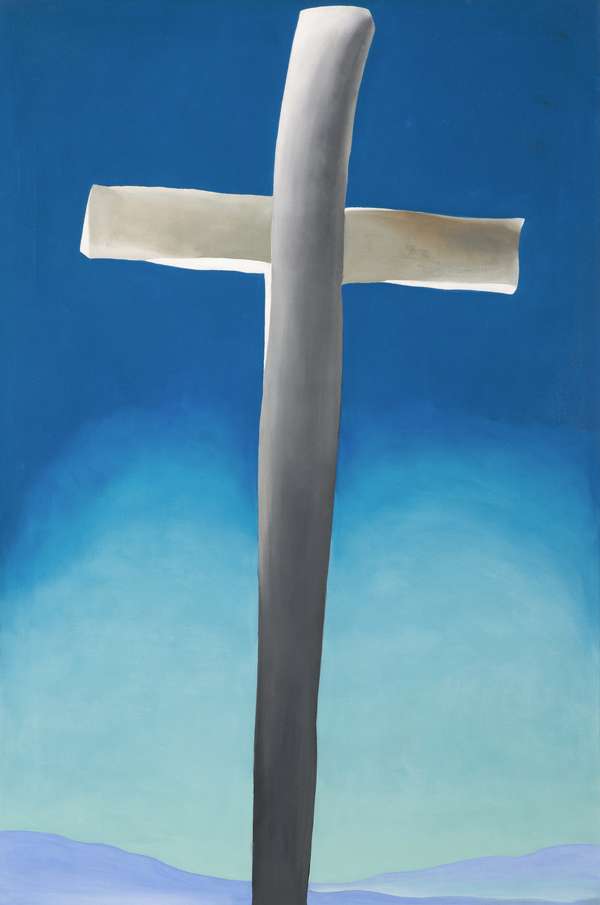
GEORGIA O’KEEFFE, GRAY CROSS WITH BLUE, 1929
Oil on canvas, 91.4 x 61 cm
Albuquerque Museum, museum purchase, 1983 & 1985 General Obligation Bonds, Frederick R. Weisman Foundation, Ovenwest Corporation, and The Albuquerque Museum Foundation
© Georgia O’Keeffe Museum / 2021, ProLitteris, Zurich
Photo: David Nufer
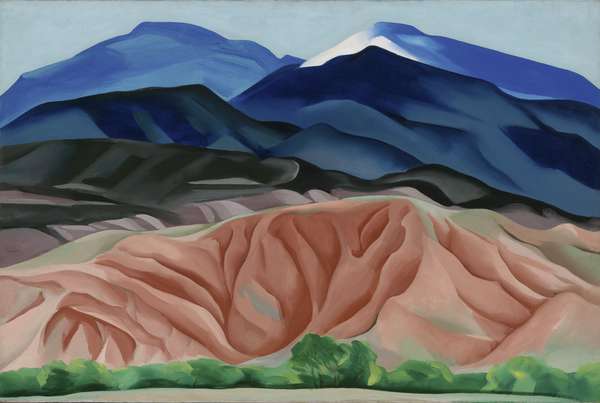
GEORGIA O’KEEFFE, BLACK MESA LANDSCAPE, NEW MEXICO / OUT BACK OF MARIE’S II, 1930
Oil on canvas, 61.6 x 92.1 cm
Georgia O‘Keeffe Museum, Santa Fe, NM. Gift of The Burnett Foundation, 1997
© Georgia O’Keeffe Museum / 2021, ProLitteris, Zurich
Photo: Georgia O‘Keeffe Museum, Santa Fe / Art Resource, NY
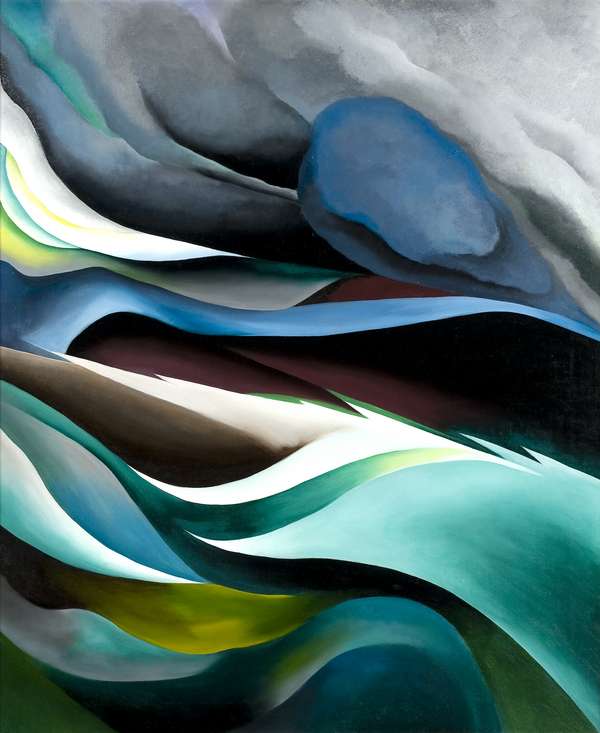
GEORGIA O’KEEFFE, FROM THE LAKE NO. 1, 1924
Oil on canvas, 91.4 cm x 76.2
Des Moines Art Center, Nathan Emory Coffin Collection, purchased with funds from the Coffin Fine Arts Trust, 1984
© Georgia O’Keeffe Museum / 2021, ProLitteris, Zurich
Photo: Rich Sanders, Des Moines
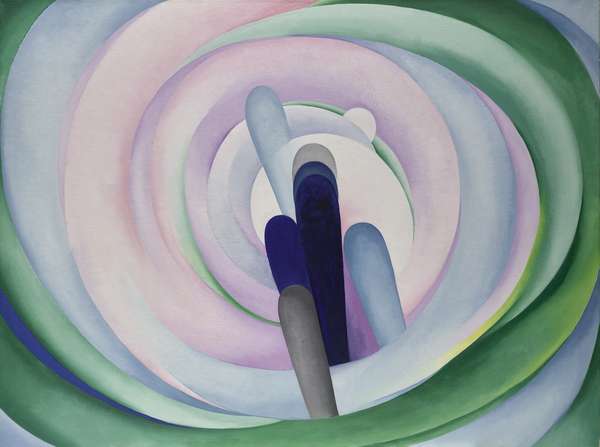
GEORGIA O’KEEFFE, GREY BLUE & BLACK—PINK CIRCLE, 1929
Oil on canvas, 91.4 x 121.9 cm
Dallas Museum of Art, Gift of the Georgia O‘Keeffe Foundation
© Dallas Museum of Art
Photo: Courtesy Dallas Museum of Ar
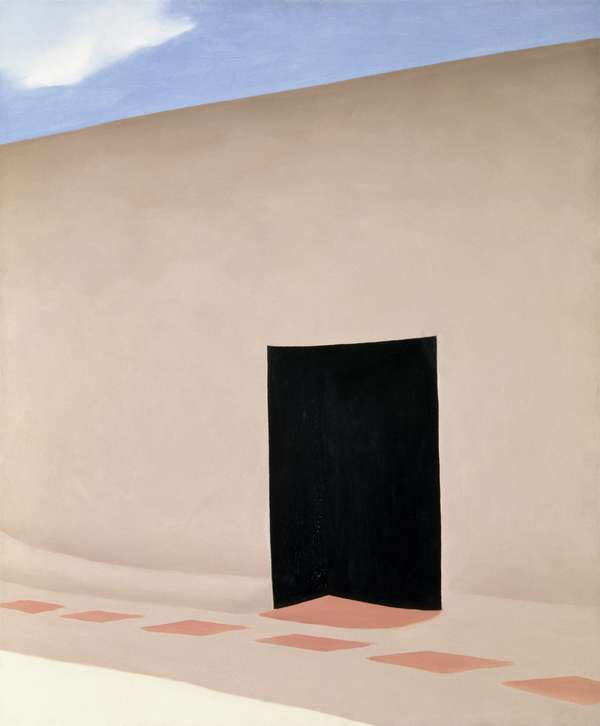
GEORGIA O’KEEFFE PATIO WITH CLOUD, 1956
Oil on canvas, 91.44 × 76.2 cm
Milwaukee Art Museum, Gift of Mrs. Edward R. Wehr
© Georgia O’Keeffe Museum / 2021, ProLitteris, Zurich
Photo: John R. Glembin
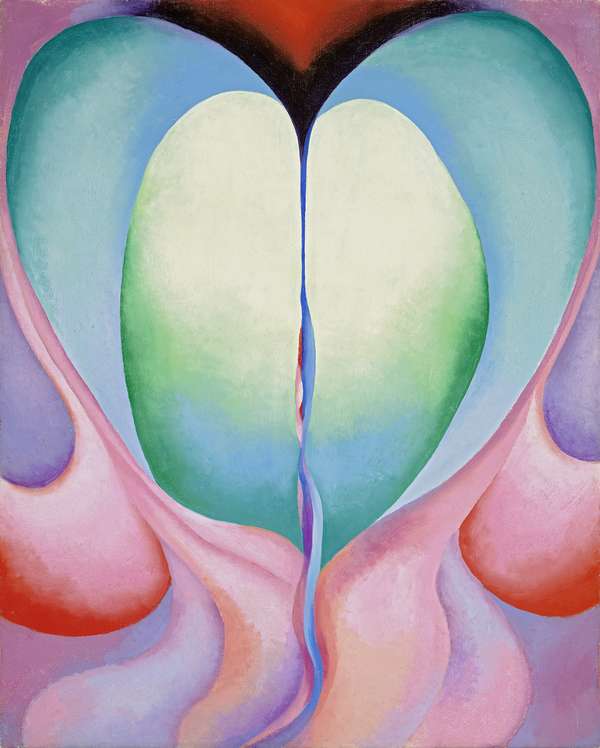
GEORGIA O’KEEFFE, SERIES I, NO. 8, 1919
Oil on canvas, 51 x 41 cm
Städtische Galerie im Lenbachhaus und Kunstbau Munich, Gift of the Georgia O‘Keeffe Foundation
© Städtische Galerie im Lenbachhaus und Kunstbau Munich
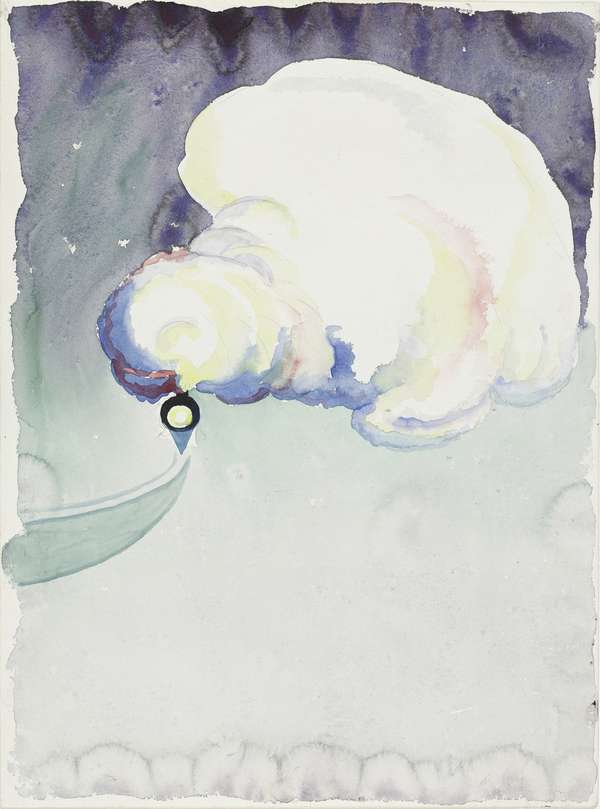
GEORGIA O’KEEFFE, TRAIN AT NIGHT IN THE DESERT, 1916
Watercolor and pencil on paper, 30.3 x 22.5 cm
The Museum of Modern Art, New York. Acquired with matching funds from the Committee on Drawings and the National Endowment for the Arts, 1979.
© Georgia O‘Keeffe Museum / 2021, Pro Litteris, Zurich
Photo: © 2021. Digital image, The Museum of Modern Art, New York/Scala, Florence
The exhibition starts with a look at O’Keeffe’s early works, produced during her time as an art teacher in Virginia and in Texas. Charcoal drawings such as Early Abstraction, 1915, and No. 14 Special, 1916, are shown alongside a selection of small-format, saturated and vibrant watercolours. Red Landscape, 1916/17, with its night sky lit up by a spectacular explosion that turns the barren hillscape crimson red, is one of the rare oil paintings produced during these years. Subsequent works such as Blue and Green Music, 1919/1921, and Series I – From the Plains, 1919, manifest the artist’s path toward abstraction.
Fundamentally, however, O’Keeffe’s work is defined by the coexistence of figurative and abstract painting. Plants, especially flowers, provided key motifs in O’Keeffe’s work. In her large-scale flower paintings, such as Jimson Weed / White Flower No. 1, 1932, one of the most famous in this group, or Oriental Poppies, 1927, O’Keeffe’s interest in the movement of “straight photography” becomes apparent.
O’Keeffe found her most important sources of inspiration in landscapes and in the natural world; she painted both figurative and abstract works based on landscape motifs, first on Lake George and later in New Mexico. The works from her first stay in New Mexico, among them Ranchos Church No. 1, 1929, and Gray Cross with Blue, 1929, were inspired by typical elements of the region such as its adobe architecture or the penitents’ crosses erected by a religious lay brotherhood. This is also the period in which she painted Mule’s Skull with Pink Poinsettias, 1936, one of her famous paintings featuring the animal skulls she found in the desert.
During the years of the war, in which O’Keeffe lived permanently in New Mexico, her view of the landscape shifted. In her two series Black Place I–IV, 1944, and Black Place I–III, 1945, she represented the greyish black landscape in an unusually dark palette, from a bird’s-eye view and in ever more abstracted form. The still life It Was a Man and a Pot, 1942, featuring a human skull, suggests that O’Keeffe’s perception of her surroundings changed in the 1940s as the war raged on. In the last room of the exhibition, O’Keeffe’s late work comes face to face with Black Mobile with Hole, 1954, by Alexander Calder (1898–1976), whose work has long been closely associated with the Fondation Beyeler – by way of both the museum’s collection and several exhibitions.
While Calder, unlike O’Keeffe, maintained an ongoing relationship with Europe, both artists shared a deep attachment to the wide expanses and endless horizons of rural America, which permeate their work.
During her own lifetime, Georgia O’Keeffe was considered a major exponent and co-initiator of new American art as propagated since the late 1910s next to and distinct from the European avant-garde. In 1943, her first museum retrospective took place at the Art Institute of Chicago and in 1946, the Museum of Modern Art in New York organised a large exhibition of her work, the first such display the institution had ever devoted to a female artist.
Most of O’Keeffe’s works are to be found in the United States, both in more than 100 public collections and in private hands. In Europe, to which O’Keeffe herself travelled for the first time in 1953 aged 65, only around a dozen works are held in private and public collections. Her first major exhibition on the Old Continent took place in 1993 at the Hayward Gallery in London. One of the rare exhibitions in the years that followed, and the very first to be held in Switzerland, was the retrospective curated by Bice Curiger at the Kunsthaus Zürich in 2003. Today, Georgia O’Keeffe is also among the highly recognised artists in Europe, even though the originals of her works are rarely to be seen here.
“Georgia O’Keeffe” is curated by Theodora Vischer, Chief Curator, and is on view at the Fondation Beyeler from 23 January to 22 May 2022. The exhibition has been organised by the Fondation Beyeler, Riehen/Basel, the Museo Nacional Thyssen-Bornemisza, Madrid, and the Centre Pompidou, Paris, in partnership with the Georgia O’Keeffe Museum, Santa Fe.
The exhibition catalogue is published in German by Hatje Cantz Verlag, Berlin. Numbering 208 pages, it brings together articles by Cody Hartley, Anna Hiddleston-Galloni, Didier Ottinger, Marta Ruiz del Árbol, Ariel Plotek and Julia Keller. With a foreword by Sam Keller and Theodora Vischer. The exhibition is generously supported by: Beyeler-Stiftung Hansjörg Wyss, Wyss Foundation Art Mentor Foundation Lucerne FX & Natasha de Mallmann Erica Stiftung Patronesses of the Fondation Beyeler Terra Foundation for American Art Wyeth Foundation for American Art
Biography of Georgia O’Keeffe
November 15, 1887 Georgia Totto O’Keeffe is born to Francis Calyxtus O’Keeffe and Ida Totto O’Keeffe at the family dairy farm at Sun Prairie, Wisconsin. She is the second of seven children. As from 1898 First art lessons at home. O’Keeffe’s creative talent is already recognized in school. 1905/1906 Studies art at the School of the Art Institute of Chicago. 1907/1908 Attends the Art Students League in New York. In January 1908, she visits the Auguste Rodin exhibition at the avant-garde New York “291” gallery run by photographer and gallerist Alfred Stieglitz (1864–1946). 1908–1910 Due to family financial problems, O’Keeffe quits the Art Students League and finds work as a freelance commercial artist in Chicago. Summer 1912 Attends Alon Bement’s drawing classes at the University of Virginia in Charlottesville. 1914/1915 Studies with Arthur Wesley Dow at Teachers College, Columbia University, in New York. 1915/1916 Moves to South Carolina, where she teaches art at Columbia College. Produces her first abstract charcoal drawings, which she names the Specials. Spring 1916 Alfred Stieglitz exhibits some of O’Keeffe’s charcoal drawings in a group show at his 291 gallery. From now until his death, he will be O’Keeffe’s most important promoter. Start of an intensive written correspondence between Stieglitz and O’Keeffe.
1916–1918 Teaches at the West Texas State Normal College in Canyon, Texas. The Texan landscape inspires O’Keeffe to paint numerous watercolors.
Spring 1917 First solo show at Alfred Stieglitz’s 291 gallery in New York. During her visit to New York, O’Keeffe makes friends with the photographer Paul Strand (1890– 1976). 1918 Moves to New York. O’Keeffe gives up teaching. With Stieglitz’s financial support, she is finally able to pursue painting full-time and starts working intensively in oil. O’Keeffe und Stieglitz become lovers. Over the coming decade, they spend the winter and spring in New York City, and the summer and fall in the Stieglitz family holiday home at Lake George, New York State.
1923 At the start of the year, Stieglitz hosts a large solo show with one hundred works by Georgia O’Keeffe at The Anderson Galleries in New York. He will organize exhibitions of her work annually right up to his death in 1946. 1924 O’Keeffe marries Alfred Stieglitz on December 11 in New Jersey.
1925 Together with other artists from Stieglitz’s circle, O’Keeffe takes part in the Seven Americans group exhibition organized by Stieglitz at The Anderson Galleries, where she shows her first large-format flower paintings. O’Keeffe and Stieglitz move into the Shelton Hotel. She embarks on a series of paintings of New York skyscrapers (1925–1932). Summer 1929 First extended stay of several months in Taos, New Mexico. O’Keeffe is deeply impressed by the landscape and culture of northern New Mexico and finds new subjects for her painting. In the 1930s and 1940s, she will seasonally spend part of the year in her new adopted home of New Mexico. Summer 1934 First stay at Ghost Ranch, a guest ranch near the small village of Abiquiú in New Mexico, where from now on she will rent a property annually, before in 1940 buying a house and some land on the site. 1936 O’Keeffe makes her first trip to the location she calls the Black Place in the Bisti Badlands. This inhospitable landscape, with its extraordinary, austere rock formations, inspires her to create a series of impressive paintings. 1940 O’Keeffe buys her first house in New Mexico, the Rancho de los Burros on Ghost Ranch land. 1943 Full-scale retrospective at the Art Institute of Chicago. O’Keeffe begins a series of paintings of animal pelvis bones (Pelvis series). 1945 In December, O’Keeffe purchases a run-down hacienda with a large garden in the small village of Abiquiú, which she will entirely renovate over the coming years. 1946 In spring, the Museum of Modern Art honors O’Keeffe with a major retrospective. It is the museum’s first solo show of a woman artist. Death of O’Keeffe’s husband Alfred Stieglitz on July 13. O’Keeffe begins a series of Patio pictures (until 1960), in which she takes as her inspiration the dark doorway to the inner patio of her adobe house in Abiquiú. 1949 Three years after Stieglitz’s death, O’Keeffe settles permanently in New Mexico. From now on, she divides her time between her two properties on the secluded Ghost Ranch and in nearby Abiquiú. Spring 1953 First trip to Europe, where she visits France and Spain. 1959 O’Keeffe makes a world trip, which takes her to Southeast Asia, the Far East, India, the Middle East and Rome. Fall 1960 Trip to Asia, visiting Japan, Formosa, the Philippines, Hong Kong, Cambodia and the Pacific Islands. O’Keeffe’s lifestyle in her later years is characterized by international travel. The experience of flying, and the aerial views from the airplane window, offer her new perspectives and inspire her late work. 1970 In October, O’Keeffe’s most comprehensive retrospective to date opens at the Whitney Museum of American Art, New York, and is subsequently shown in Chicago and San Francisco. The exhibition wins great acclaim and introduces a younger generation to O’Keeffe’s work. As from 1971 Onset of a gradual loss of vision. 1973 O’Keeffe meets the young potter and sculptor Juan Hamilton, who becomes her full-time assistant and close confidante. 1976 Viking Press publishes the illustrated monograph Georgia O’Keeffe, which includes an autobiographical text by the artist. In October, O’Keeffe meets her friend and fellow artist Alexander Calder (1898–1976) one last time at the opening of his retrospective at the Whitney Museum of American Art in New York. 1977 Awarded the Presidential Medal of Freedom by then-president Gerald Ford; in 1985 she is awarded the National Medal of Arts by then-president Ronald Reagan. 1984 Her failing health obliges O’Keeffe to move with Hamilton and his family to Santa Fe. March 6, 1986 Georgia O’Keeffe dies at the age of 98 in Santa Fe. With a major retrospective on Georgia O’Keeffe, the Fondation Beyeler is dedicating the first exhibition of 2022 to one of the most significant artists of the 20th century and an outstanding figure in modern American art. From O’Keeffe’s earliest abstractions to her iconic depictions of flowers and landscapes of the American Southwest, the retrospective will offer an in-depth survey of the artist’s work including rarely seen paintings from public and private collections. The exhibition at the Fondation Beyeler will examine Georgia O’Keeffe’s particular way of looking at her surroundings, translating them into new and hitherto unseen images of reality.
The exhibition is organized by the Fondation Beyeler, Riehen/Basel, the Museo Nacional Thyssen-Bornemisza, Madrid, and the Centre Pompidou, Paris, in partnership with the Georgia O’Keeffe Museum, Santa Fe.
EDITED BY Theodora Vischer, Fondation Beyeler, Riehen/Basel
TEXTS BY Theodora Vischer, Marta Ruiz del Árbol, Didier Ottinger, Ariel Plotek, Anna Hiddleston-Galloni, Julia Keller
DESIGN BY Teo Schifferli 208 pp, 170 ills. 305 x 245 mm